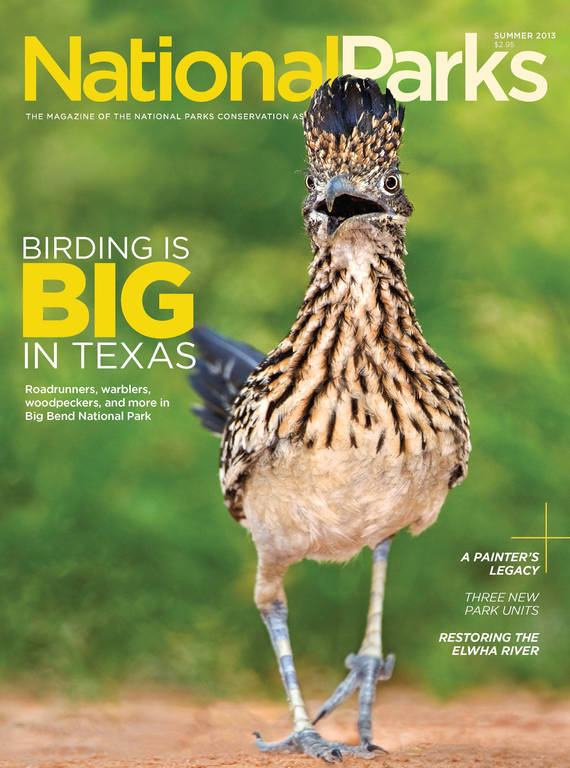Summer 2013
Elwha: A River Reborn
A new book from a reporter and photographer at The Seattle Times documents the long and successful battle to remove dams on the Elwha River in Olympic National Park.
For more than 25 years, conservationists, tribal leaders, Washington’s congressional delegation, industrialists, lawyers and lobbyists, and local, state, and federal policymakers slugged it out over the Elwha Dam (five miles from the mouth of the river) and Glines Canyon Dam (another 8.5 miles upriver). They fought over the cost of taking them out, how to do it, whether to do it, and who should pay. Whether it would work. Who should be compensated, and how. In the end, freeing the Elwha cost three times as much, and took ten times longer to get under way, than anyone originally forecast. Nearly 20 years elapsed from the time Congress in 1992 passed Public Law No. 102-495, the Elwha River Ecosystem and Fisheries Restoration Act, until the first excavator bucket, painted gold for the occasion, smashed into the concrete in a ceremony at the Elwha Dam on September 17, 2011.
NPCA @WORK
Tearing down the Elwha Dam, 108 feet tall, and the Glines Canyon Dam, 210 feet tall, would be the largest dam removal project ever in the world, opening more than 70 miles of spawning habitat to steelhead trout and all five species of Pacific salmon (chinook, chum, coho, pink, and sockeye). With more than 83 percent of its 321-square-mile watershed permanently protected in Olympic National Park in the northwest corner of Washington State, the $325 million federal project offered a rare chance to restore a legendary wilderness river valley.
As the reservoirs drained down about 1.5 feet a day, the river already was cutting through deltas of sediment backed up for decades behind the dams, creating badlands of sculpted, terraced fine material. Where the lowering water levels of the reservoir left their mark in ripples and ridges, the cliff sides were as gray and wrinkled as elephant skin. On the flats, tiny raccoon footprints showed animals even now were exploring the new landscape. It was easy hiking, soft as a sandy beach. Along the river, a ghost forest graveyard offered hints of the grandeur that had been: Gigantic cedar stumps wider than a king-size bed studded the flats. They were all that remained of the trees logged off before the gates of the dam were shut and the forest turned into a lake.
On the sediment badlands above the river, the pioneers of what might one day be a forest again were already in the ground: native plants raised from seeds gathered in the Elwha valley, part of an unprecedented replanting effort by the National Park Service to stabilize the more than 800 acres that eventually will be exposed in the former lake beds.

National Parks
You can read this and other stories about history, nature, culture, art, conservation, travel, science and more in National Parks magazine. Your tax-deductible membership donation of $25 or more entitles…
See more ›And somewhere out there in the North Pacific were the salmon and steelhead whose genetic code still urges them home to this river. Even after all these years, a storied run of fall chinook, which back before the dams could grow as large as a hundred pounds, still return to what’s left of their spawning ground in the lower river, swimming as far upstream as possible before being stopped at the lower dam, built without fish passage. Scientists think once both dams are out, those fish, still genetically distinct from other Puget Sound chinook, will one day thrash up to the very feet of Mount Olympus. Food indeed fit for the gods—but also for a whole suite of life, from shrews to river otters, mink, bears, eagles, insects, and more, sustaining an entire watershed starving for the feast of fish from the sea.
Renewal of the Elwha ecosystem has broader implications, too. The Lower Elwha Klallam Tribe, the first people of the watershed, lost the most when the dams went in and stand to reap some of the most profound gains as the dams come out. In the return of wholeness to the landscape, tribal members say, is the return of wholeness to the people. Not only for the tribe, but also for the rest of us.
In the summer of 2010, The Seattle Times staff photographer Steve Ringman and I began a long-term exploration of the Elwha River and its historic transformation. Our work is captured in the new book, Elwha: A River Reborn (Mountaineers Books, $29.95). The photos and text on these pages have been adapted from that book, offering a glimpse of the unprecedented efforts to restore this unique landscape.



